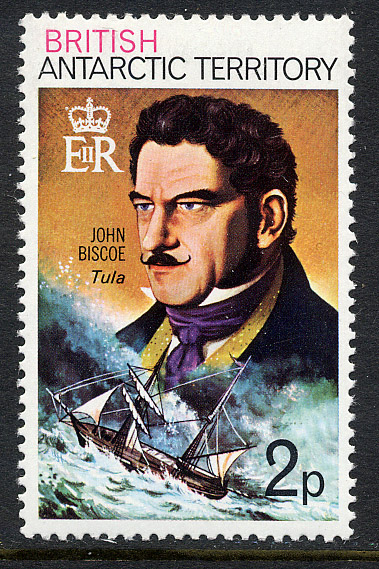Post
by aukepalmhof » Mon Sep 07, 2009 9:22 pm
Built in 1819 as a wooden ship by Thomas Pope, Mount Batten, U.K.
Launched under the name TULA
Tonnage 150 tons, dim. 74.4 x 21.11 x 13ft (draught).
Brig rigged.
1830 Bought by Charles, George and Henry Enderby, (Enderby Brothers) together with the LIVELY a former 40 ton Cowes pilot boat cutter built in 1794, were fitted out, and the hull strengthened for ice and copper sheated for a exploration voyage and looking for new sealing grounds in the Antarctic waters.
The TULA sailed out on the 14th July 1830 from Gravesend, River Thames for the Falklands Islands; she was under command of John Biscoe in company of the LIVELY under command of Captain Avery.
09 November arrived in Berkeley Sound and anchored off Port Louis.
Both vessels departed from the Falkland Islands in November for the Antarctic waters.
She arrived at the South Shetlands Islands in December, but did not find much seals and they decided to sail southwards for better sealing grounds.
Passed the Antarctic Circle on 22 January 1831.
Soon both vessels were amongst the ice, and in 28 February 1831 they discovered land, which they named Enderby Land after the owners of the ships.
They were battling amongst the ice and in bad weather with tick fog both vessel lost contact. The TULA was severe damaged in the ice but returned to look for the LIVELY with no success. The crew on board then got scurvy and Captain Biscoe decided to head for Hobart on Van Diemen’s Land (Tasmania) for fresh provision and repair.
Arrived in the River Derwent on 10 May 1831, two men of the crew died on scurvy.
Not much of her stay on the River Derwent nor any account of her voyage to and from the south you can find only when she stayed in the Hobart Town Journals her arrival date is know and that two boats from her assisted by the Kangaroo Point ferry-boat that swamped in a heavy squall.
After her repair and the recuperating of the crew, in October she sailed out again in search for the LIVELY.
The LIVELY with on board 8 men, after parting from the TULA became embayed in the ice for five months. The crew suffering from food and cold went down one by one by scurvy. Only Captain Avery a boy and one man were left. The captain himself was so weak that he had to rig a block and tackle to get the last two men who died overboard. The boy had injured his hand.
At least the LIVELY was free of the ice, and after a long struggle with wind seas and the weakness of the crew they sighted the coast of New Holland (Australia).
The LIVELY entered Hobson’s Bay and anchored, the three men left the vessel to look for food and game on shore, while she were sleeping on shore a gale sprung up and the LIVELY drifted out to sea.
After 14 days searching they found her stranded vessel in a bay, looted by aborigines.
By the help of guns they drove of the natives, and after much exertion she refloated the cutter, and set sail for Hobart town. Arrived in Storm Bay on 10 October and met the TULA off Bull Bay.
Together the two vessels sailed to the Derwent, where the LIVELY was repaired and got new provision.
Then both vessels set sail and sailed from the Derwent to finish the job in the south.
Adelaide Island, Graham Land, the Pitts Island and the Biscoe Islands were discovered. The little cutter was wrecked, without loss of live on the Mackay Islands one of the Falkland Islands, after a visit both ships made there, only the TULA after a voyage of two and a half years anchored in the River Thames near Gravesend on 30 January 1833, with on board only 30 seals pelts, not a profitable voyage.
The TULA and LIVELY were the third vessels to circumnavigated the Antarctic continent.
05 March 1833 sold to Capt. Isaac Storm and a Jarrow shipbuilder.
She was lost in 1837 or 1838.
The 2p stamp depicts John Biscoe, not a painting of drawing exists which depict the man, and the designer of the stamp depicts a fictional portrait of him.
The journal of the voyage is kept in a British Museum.
British Ant. Terr. 1973 2p sg67 and 1980 3p sg93
Source Log Book. The Annual Dogwatch No 13 1956 page 124. Some web-sites.
-
Attachments
-


